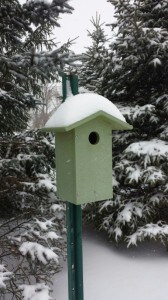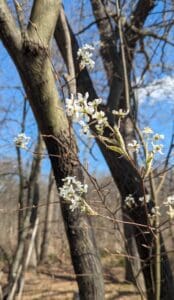
(Chelsea Update would like to thank Jennifer Fairfield, owner of the Garden Mill, for the information in this story. Part 1 ran yesterday.)
March is also a good time to get flowers started, if you plan to grow your own. I like to grow some of my own, simply because I can get varieties that I might not be able to find in nurseries, and it’s less expensive. Start Zinnias early in the month, and amaranth, catmint, cleome, Echinacea, gaillardia, nigella, stock, and thunbergia by mid- to late-March.
Begin fertilizing indoor plants that you were letting rest over the winter. Also, now is a great time to re-pot any of your indoor plants that need it – before you get so involved with everything that needs to be done outdoors that you can’t get to them. If some of your plants are getting really big, split them into a few smaller ones so that you don’t have one huge plant that you can’t move. If you don’t have room for all those little ones, give them away as gifts.
If you stored tender bulbs over the winter, check them now and discard any that are soft, damaged or diseased.
If you potted bulbs for forcing last fall, check their progress. When your bulbs get a few inches of growth, it’s time to move them into a cool (60 degrees) sunny spot, but not in direct sunlight. Once they have flowered, move them into a warmer spot, but keep them out of direct sunlight to help the blooms last longer. For even longer lasting blooms, provide cooler nighttime temperatures.
Outdoors
Take a walk around your yard and look for damage done to trees and shrubs by weather and animals. Prune off any damage you find.
Get done any pruning that you haven’t yet by mid-month. Don’t wait until the weather starts to warm up to do this task. It’s not good for your trees and shrubs for all kinds of reasons, including making them vulnerable to insects and disease that are active in warm weather. There are some trees and shrubs that will do better being pruned later in the year, mostly those that flower really early, but everything else should be done while it’s still below freezing most days.
Bring spring indoors early by forcing branches of forsythia, pussy willow, quince, spirea, and dogwood. Long, slanted cuts help the branches take up water. Place the branches is vases of water, and change the water every few days. They should bloom in about 3 weeks.
March is often a time for snow to melt and refreeze over and over again. It’s also when we tend to get some of the worst ice storms, as the temperatures often hover around the freezing mark when we get precipitation. When using salt to melt ice on walks and driveways, spread it carefully to avoid damage to nearby plants. Consider using sand or sawdust instead, or some of the “safer” ice melts available these days. For more on dealing with ice in a manner that is safest for plants and animals, read this posting of an interview with Russ Alger, Director of the Keweenaw Research Center at Michigan Tech – where they really know about snow and ice.
As the temperatures start to warm up and the snow begins to melt, check plants to make sure they have not been pushed out of the ground by frost heave. If they have, gently press them back down to prevent damage to the roots and plant. Then give the plant a good layer of mulch to protect from future thaw and re-freeze cycles that are bound to happen this month.
Also try to stay off the lawn and out of garden beds as much as possible as the snow melts. Wet soil is easily compacted by walking on it at this time, and compacted soil is very difficult for anything to grow in.
If the soil is workable at all later this month, consider doing a soil test so that you know what your plants or grass need before you start adding fertilizers. We carry a very good at-home test kit at the store, or you can send away for a more comprehensive test kit from the MSU extension.
For the birds
Continue to feed them. The options for food in nature are really slim for birds at this point, so give them as much help as you can. Pretty soon, they will return the favor by eating the insects that start showing up in your garden. Also, continue to provide water for them.
Clean out nest boxes, or put up new ones. Many birds will begin to scout out nesting sites this month, so cleaning out existing houses or putting up new ones now will encourage them to take up residence at your home – and they’ll be feeding their young with insects from your yard this spring.
While you’re planning your garden this month, keep the birds in mind. Consider varieties of trees, shrubs and other plants that can provide sources of nesting places, shelter, or food for birds.
To learn about what it takes to attract birds, butterflies, and more to your yard, join us for a discussion on “Birdscaping” with naturalist/Stewardship Coordinator Gary Siegrist of The Dahlem Conservancy in Jackson on Saturday, March 14.














